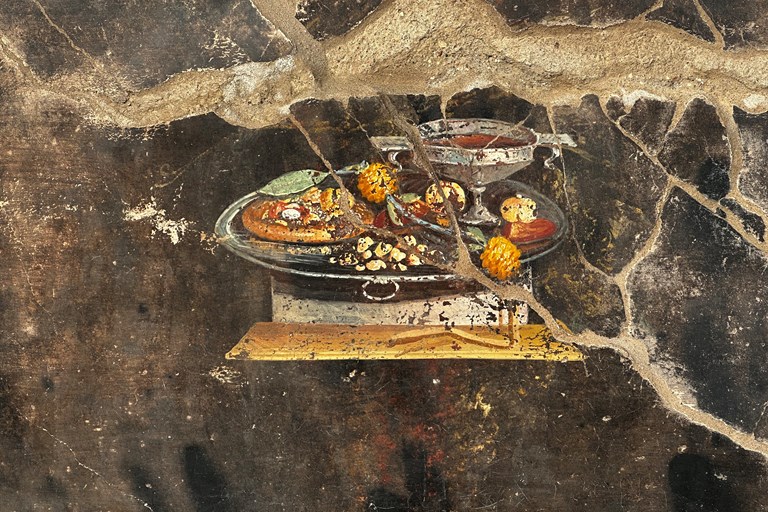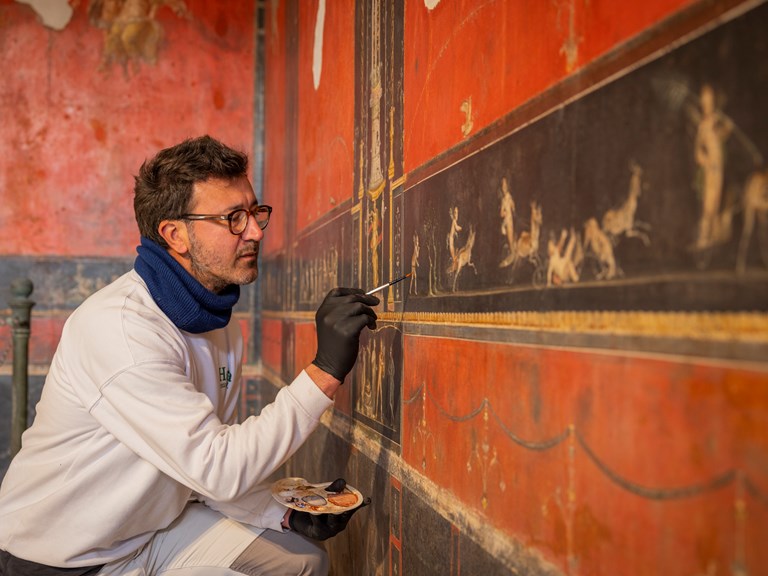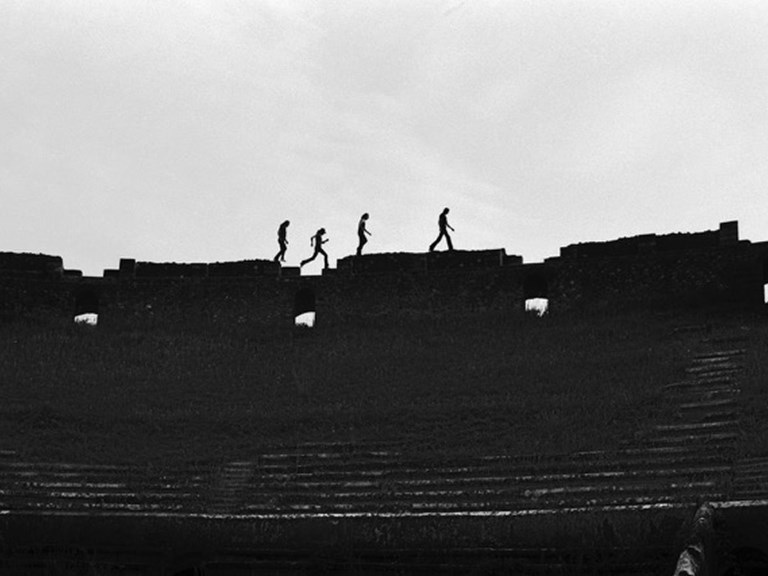ET TU, PIZZA?
20.07.2023 NAPLES & AROUND
The occasion for all the excitement was a 27 June press release put out by the Pompeii archaeological park. It’s estimated that at least a third of the city destroyed by the eruption of Vesuvius in the first century AD is still underground. But many other insulae, or city blocks, were only partially excavated in the past, leaving plenty more for today’s archaeologists to uncover. The press release announced that in one such residential block – Insula 10 of Regio (district) IX – a wall painting with a still life of food and drink on a silver tray had been recently revealed.
At first sight, the discovery was not groundbreaking. The mural belonged to the so-called ‘xenia’ genre, depicting the tray of seasonal fare that a good host would send to the rooms of his house guests (think of it as the Greek and Roman equivalent of a basket of fruit in a hotel room). Hundreds of such scenes have been found in residential bulidings buried by the AD 79 eruption; they are thought to have had a ritual significance, as if the xenia were an offering from the host to the gods who guarded over the house. What was unique about this particular painting, however, is the doughy disc that can be seen on the lefthand side of the tray. With its thick crust and red and white topping, it bears an uncanny resemblance to a Neapolitan-style pizza margherita.
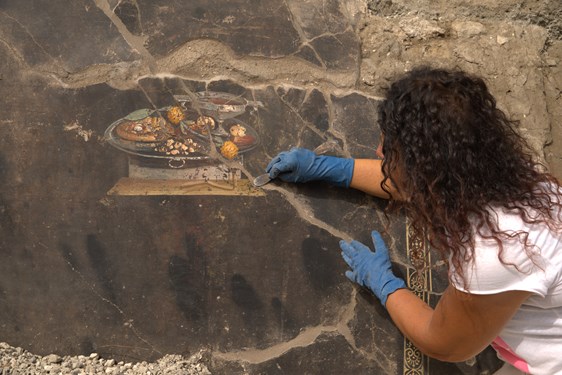
View
In his statement about the discovery, Pompeii director Gabriel Zuchtriegel made it clear that this could not be a pizza as we know it today, because two of the main elements – tomato and mozzarella – did not exist in Roman times. Tomatoes were brought to Europe from Central America only in the 16th century. The history of mozzarella is less easy to trace, but while Romans certainly made cheese, there is no evidence that they knew of the pasta filata or ‘stretched curd’ method, whereby curds are kneaded in a bath of hot water.
What we see, Zuchtriegel explained, “is a kind of sacrificial focaccia, an offering with some sort of seasoning on top, some spices, but more importantly pomegranates, dates and other foods”. Though clearly not a pizza as we understand the term today, the flatbread could, Zuchtriegel added, be “its distant ancestor”. One interpretation of the ‘focaccia’ is that it may have been intended as an edible plate, rather like the wheat or corn bowls that salads are sometimes served in today in modern bistros (there’s even a reference to this practice in ancient Roman poet Virgil’s epic poem The Aeneid).
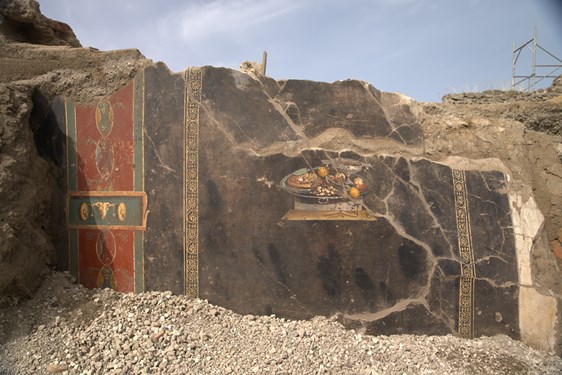
View
As well as sparking interest across the globe, the Pompeii story also revived an age-old debate within the Italian pizza community: is a pizza defined by its base, or by the combination of base and topping? In other words, can a pizza without either tomato or cheese on top properly be called a pizza? Years ago, the Neapolitan answer would almost certainly have been a resounding “No!”, but more recently, new generations of Neapolitan and Campanian pizzaioli like Enzo Coccia at La Notizia or Franco Pepe at Pepe in Grani have begun to experiment with no-tomato and no-cheese pizzas. Pepe for example offers a pizza called Memento topped with onion cream, chickpeas, fried onions, raw chicory, black pepper and olive oil – all ingredients that were readily available in Ancient Rome.
Celebrated Neapolitan pizzaiolo Gino Sorbillo, never one to miss a good news angle, made his own Pompeiian ‘pizza’ live on Italian TV, topped with pomegranate seeds, spinach, anchovies, colatura di alici (an anchovy sauce produced on the Amalfi Coast that is similar to the Ancient Roman garum), walnuts and olives. It’s available to order at Sorbillo’s historic Via dei Tribunali pizzeria in central Naples.
Rome-based food writer Rachel Roddy also made a version of the Pompeiian pie, one that used only heritage grains that would have been around in the first century AD and faithfully copied the ingredients seen in the recently discovered fresco. “The smell was like distant toffee apples”, she reported.
Photos by kind permission of the Parco Archeologico di Pompei
Le Sirenuse Newsletter
Stay up to date
Sign up to our newsletter for regular updates on Amalfi Coast stories, events, recipes and glorious sunsets
